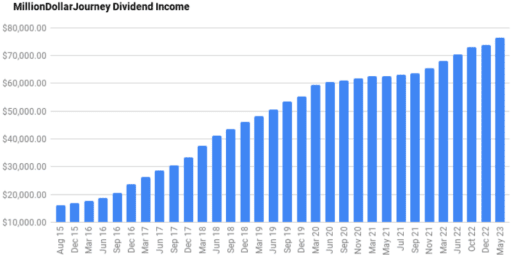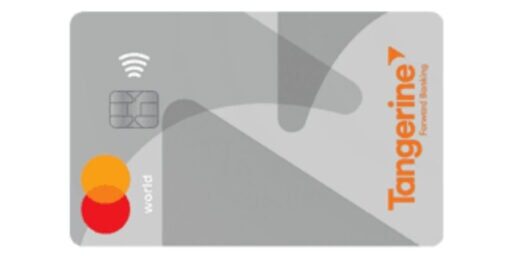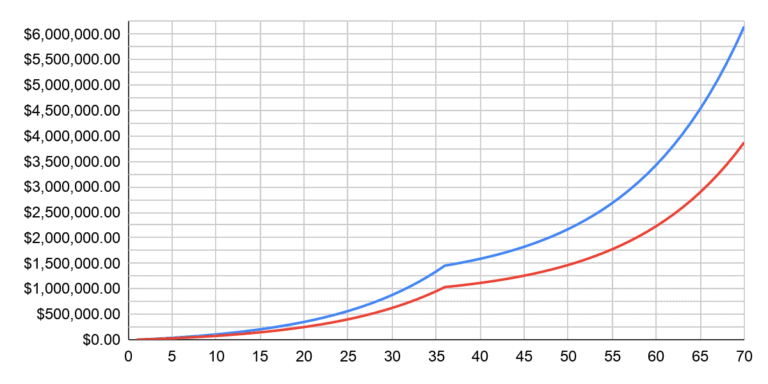Where is the Loonie Heading? Will it Ever Reach Parity with the US Dollar Again?
Before we get too far into talking about foreign exchange (FX) and/or conversion rates from Canadian Dollars (CAD) to US Dollars (USD) it’s worth noting that in no way am I advocating that people should get into currency trading. Trying to predict currency markets is like lighting a bunch of fuses and predicting which firework goes off first – it’s a completely random process and you’re bound to get burned!
FX price action in the last month is perhaps giving us a glimpse into the future of FX markets in a COVID-influenced world. Windows of optimism are welcomed as lockdowns are eased but can just as easily be temporarily snapped shut as fears of a second wave emerge.
Given the recent circumstances it may feel like a different world away that USD/CAD had parity back in 2013. Indeed, it even feels like a different world to when USD/CAD edged closer to the 1.20 benchmark. That was back in September 2017 and CAD sentiment was strong following two consecutive rate hikes by the Bank of Canada. Fast forward two-and–a-half years, and the Bank of Canada slashed interest rates for a third time in a matter of weeks as they announced plans for further quantitative easing to protect the Canadian economy from the coronavirus fallout. This final move saw the Bank of Canada lower its policy rate in March by another half a percentage point to 0.25%, bringing the rate down to its lowest since the 2009 global financial crisis.
At the time of that rate cut, the Bank of Canada announced “The spread of COVID-19 is having serious consequences for Canadians and for the economy, as is the abrupt decline in world oil prices… the intent of our decision today is to support the financial system in its central role of providing credit in the economy, and to lay the foundation for the economy’s return to normalcy.”
Of course, the Bank of Canada was by no means alone in bringing interest rates to their lowest recorded levels since the 2009 crisis, and aggressive liquidity provision by central banks has been a common theme across major global economies. One of the biggest restraints for CAD in 2020 has been the demand for oil. The slump in energy consumption following the global lockdown has weighed heavily on CAD, and whilst it wasn’t until the end of April that an oversupply of oil triggered a historic market collapse, the effect of COVID on oil prices was evident from early March.
It’s estimated that just shy of 10% of Canada’s GDP is driven by oil, but it certainly isn’t the only economy heavily reliant on the industry. Norway finds itself in a similar position and no other G10 currency has seen falls and gains against USD to the extremes that NOK has. Even if we look at the US, oil contributes around 8% of its GDP. Crude, WCS and WTI oil prices have all followed a similar pattern, yet we saw USD/CAD reach a four-year high at 1.45 on the 20th March.
This development was as much to do with the influence of COVID on the general market outlook, as it was just the impact of COVID on oil. March 20th was just days after Canada and other major economies entered lockdown. It was the beginning of uncharted territory for financial markets that saw investor sentiment keen to protect itself by buying the world’s reserve currency (USD).
Just three months on though and the US Dollar has handed back pretty much all of its mid-March gains. COVID continues to disrupt the US economy and some states are still reporting an increase in the number of daily coronavirus cases. As economies begin to open up elsewhere, investors are keen to get their money back to work too. Not to mention the November presidential election which is sure to weigh heavily on the US Dollar.
Since April, we’ve also seen the recovery of oil prices. Citibank had this to say in its CAD outlook, “The loonie has benefited from the general reflationary dynamics/risk on momentum we’ve seen across markets. We expect risk sentiment to continue to be an important driver, but also think CAD has some catching up to do from a fundamental perspective such as oil prices. WTI has found a bottom and continues to steadily rise. This may continue to support CAD over our forecast horizon as our forecast WTI at 51$/bbl in 12m.”
Strength in the Loonie has been attributed to effective OPEC cuts which have helped to bring stability to oil prices, and a less aggressive quantitative easing program than the monetary strategy beign deployed in theUSA. We shouldn’t ignore the underlying positive numbers seen in employment either. Canada added 290,000 jobs during May, recovering nearly 10% of the jobs lost since the economy was struck by the coronavirus crisis in March. To put this into context, Australia has just announced employment has fallen by a further 227,700 in May.
Citi forecasts predict USD/CAD could move below 1.30 within the next three months. The mid-term outlook from ING is similar and predicts an “attractive outlook” for CAD, setting a one-month target of 1.33, a three-month forecast of 1.32 but saying USD/CAD may well hit 1.30 in Q3.
ING Forecasts (June 12th)
| 1-month | 3-month | 6-month | 12-month | |
| USD/CAD | 1.34 | 1.32 | 1.29 | 1.26 |
Bank of Montreal Forecasts (May 19th)
| Q3 | Q4 | Q1 (2021) | Q2 (2021) | Q3 (2021) | Q4 (2021) | |
| USD/CAD | 1.42 | 1.41 | 1.39 | 1.38 | 1.37 | 1.35 |
Whilst not all banks are as bullish on CAD as Citi and ING, it’s clear that even those who felt CAD would be worse off than it is right now still see a positive trend for CAD in the USD/CAD pairing. Bank forecasts see the currency pairing sitting roughly somewhere between 1.30 – 1.40 by the end of the year.
Consequences On Canadian Buying Power In the USA
After a rocky start for the Loonie in 2020, we have started to see a recovery in the last month or so; however, volatility between CAD/USD this year has been higher than at any point in the two years that preceded it. Depending on when you converted your CAD to USD or made a purchase in USD, you could have achieved a rate anywhere from 1.29 at the beginning of January to 1.45 at the end of March (meaning 1 CAD would have bagged you 0.77 USD and 0.69 USD respectively.) US goods could have proved over 11% more expensive depending on when you made a purchase.
2018-2019 was a period where CAD/USD moved almost exclusively between the 1.30 – 1.35 range, so based on bank forecasts, you can expect the Loonie to grant you roughly the same purchasing power as it has over the last two to three years. It may prove worthwhile holding off on USD purchases to the back end of the year as most banks agree you’ll be getting more bang for your buck by the end of the year, but quite how much has mixed views.
If we aren’t likely to see any significant moves in favour of CAD in the CAD/USD pairing it should only increase the focus on saving on the currency exchange itself. We’ve already covered off how to save money with Norbert’s Gambit when converting CAD to USD.
Is Buying US Stocks a Good Idea Right Now?
US equities have received a significant boost ever since the Federal Reserve’s announcement it was to buy government bonds in unlimited amounts. This unprecedented commitment was much was necessary to support the US economy. Thus, stock market performance is now in stark contrast to all of the economic data releases we are seeing from the US which are reporting negative figures. This is a shaky foundation to say the least. Whilst we can make somewhat measured predictions on the vast majority of sectors which are being negatively impacted by COVID and the smaller number of sectors which haven’t been impacted (or perhaps even benefitted), we’re still some time off being able to measure the true impact of COVID on an individual company basis. Buying US stocks right now still remains high-risk.
A Word on Trading FX for Personal Gain
Foreign exchange remains the most active financial market in the world. It’s now reported that $6.6 trillion of currency is traded in a single day, dwarfing the size of assets traded daily on stock markets around the world. Big banks and corporations make up the vast majority of trading volumes, but smaller institutions and retail speculators are still trading trillions of dollars’ worth of forex each and every day.
Despite this extreme market volatility, currencies are perhaps the highest risk financial instrument to trade of all. When it comes to currencies, there have usually been a few key metrics we can turn to in order to make predictions – namely GDP output and interest rates. Again, it’s worth noting that since this is all publicly-available information, there is no real advantage to be gained by reading into it. With all major economies setting interest rates either at or near 0% and the fact that all of these economies are set to experience a recession, market sentiment has rarely been this polarized and extreme. Market sentiment is moulded by a near-endless list of factors. Investor confidence is highly sensitive to the flood of news, data and other developments that happen around the world. Both fundamental and technical analysis can quickly become meaningless if external factors such as COVID start to take hold.
Predicting FX rates is near impossible and banks with dedicated FX teams often get it wrong too. A quick look at the FX forecasts of Scotiabank published on Mar 6th predicted USD/CAD to be around 1.34 by the end of Q1 – in line with where the currency pair had been trading at the start of March – but within days the rate surpassed 1.40 and closed Q1 at 1.41.
Admittedly the full picture of COVID hadn’t unfolded at this point but the same will apply to the future – if even New Zealand, generally praised for its excellent COVID response – can let its standards slip and allow two British individuals to bring COVID into the country again we can expect a bumpy road to recovery for the world from COVID.
CAD risk remains elevated at the moment. Second wave risks or to coin a new phrase, ‘second lockdown risk’ will have implications on CAD, particularly if it hits the US. After all 98% of Canada’s oil exports go to the US. CAD risk is also tied to the hazards of general risk assets – so anything that could make these wobble, say a US election or US/China trade war – could prove damaging for CAD.
I've Completed My Million Dollar Journey. Let Me Guide You Through Yours!
Sign up below to get a copy of our free eBook: Can I Retire Yet?










[…] Loonie at Parity with the USD? (25 […]
Hi All,
Have you ever seen how the Personal Savings Rate is calculated? It’s ridiculous!
First, it is based on macro data that is often not very accurate and it is a residual – personal disposal income after tax less personal consumption expenditures.
Then income excludes all pension income. Why?
Then it also excludes all capital gains – on investments and real estate. Americans do the vast majority of their saving through capital gains.
Then the expenditures include “owner-occupied nonfarm dwellings space rent” – which is a fictitious number that estimates how much rent all homeowners would pay if they rented their homes instead of owning them. This number increased expenditues by $963 billion in 2005!
While Americans personal savings rates have been negative, their net worth has been rising fast. Based on the Commerce Department calculation, Bill Gates has saved almost nothing – since it excludes all the gain on Microsoft shares!
I think the number is misleading and meaningless. If you include capital gains, my guess is that American personal savings rates are the highest or one of the highest in the world.
The stat is meaningless anyway. For the last 20 years, Japan has had very high personal savings rates, but their economy has been stagnant and their stock market is down over 20 years.
Ed
[…] Million Dollar Journey presents Loonie at Parity with the USD?. With the increasing strength of the Canadian dollar and the continual weakening of the USD, […]
[…] For the first time in my lifetime, the Loonie has reached parity with the US Greenback! A few days ago, I wrote about how to take advantage of the currency situation. […]
nobleea,
A little debate doesn’t hurt and actually, for the most part, I agree with most of your points but I wanted to say a few things about the 401k and US savings rates.
I don’t know how many Americans are offered 401ks but I do know that Americans have more options for retirement plans than we do in Canada (IRAs, Roth IRAs). Most salaried employees are offered 401ks and self-employed individuals have other options as well.
You’re right that 401k limits are lower than RRSP limits. The 401k limit for 2007 is $15,500. The RRSP limit is $19k or 18%. Individual companies limit 401ks as they choose but most have limits >20% of salary. At my company, it’s 35% so unless someone is making more than $86k, maxing out would generally mean more savings in a 401k plan than in a RRSP. Also, 401k limits are not deducted by pension amounts. I’m not trying to make Americans out to be the greatest savers on Earth (we pretty much know that to be false) but I’m learning that they seem to be better about using their retirement savings plans than we are and that if those numbers are excluded from the adevertised “savings rate”, there should be an asterisk because they seem to do a pretty good job.
The other factor is that the highest tax bracket in the US is 35% (for incomes over $339k!) and 401k contributions are not deducted from State income taxes. Considering the tax savings we get (up to 48%), we have much more incentive to invest in a registered account than Americans do.
Ok, excuse me while I go make an RRSP contribution. ;)
telly,
I’m not trying to start a debate here, just want to point out some things.
“75% of Americans contributed to a 401k if it was available to them”
What percentage ARE offered 401k’s? If I recall correctly, 401k limits are lower than rrsp limits in Canada. Though it doens’t matter as few people reach the limit anyways.
Cannon_fodder, I don’t know what % the rise in our dollar is reflected by oil prices. I’m sure you could plot out the price of oil, gold, wheat, etc versus the amount a CAD$ buys in US and see the trends.
F/X rates are also driven by interest rates. The fed dropped their prime rate which makes investing there less attractive. When/if the bank of CAD raises rates here, the CAD$ will get another boost.
If a new administration got tough on the deficit, it’s tough to say what would happen. Long term, it would be good for the greenback. Short term, it would be disastrous. They’d have to do so by increasing taxes which would cut consumer spending. Then they’d have to lower interest rates again to try and jump start consumer spending. To think this would be tried while the housing sector is correcting – that would be a recipe for disaster.
China has massive amounts of US debt. They are one of the banks on the US negative ammortization mortgage. If their treasurer were to ever say ‘we’re going to diversify our holdings out of the US$’ that would singlehandedly torpedo the greenback.
Plaid??? Don’t mean to skirt the issue, but how did I manage to type plaid when it should have been played? Maybe I should have hemmed and hawed before hitting the submit button.
Any opinions on how much the rise in our dollar vs. the US is because of our fiscal prudence compared to the US (which I guess the War on Terror has plaid a major role) and the other impact on high commodity prices (oil, gold, wheat, etc.) with which Canada is blessed?
In other words, let’s say that a new adminstration is elected into the White House and they get tough on the deficit – would we expect to see by 2010 a 90 cent CDN dollar? 85 cents? Or is the big impact going to be when oil comes back down to $60 levels, wheat producers elsewhere don’t suffer from drought, and inflation hedging gold starts dropping to the $500 level because the downturn in the US housing market starts affecting the general economy?
nobleaa,
I agree with you with respect to national debt, it’s quite obvious the US has big issues right now and we are in a much better situation.
However on the retirement savings front, 401ks are actually more popular than RRSPs. In 2005 less than 40% of Canadians (aged 25-64) contributed to an RRSP while in 1999 (I can’t find more recent #’s and I would assume they are up since then), 75% of Americans contributed to a 401k if it was available to them. Many of them may have contributed to IRAs as well. I’m not surprised by this. I work in the US (live in Canada) and I know many people that work / live in the US that max out their 401k contributions AND contribute to an IRA. I don’t know a single Canadian that does (though I’ve met some online ;)). One of my former co-workers was in pretty serious debt but she would not dream of suspending her 401k contributions (even when employer matches were suspended). I’m not saying it’s the right thing to do but the truth is, 401ks are VERY popular in the US.
GatesVP, if the US goes to into a recession, it’s unlikely that we won’t be affected just because we have “land and resources”. The US is still the World’s strongest economy because a country’s economy is not dictated by consumer & government spending alone (thankfully!). George Bush is a total moron. The US will be glad when he’s gone and imo, the USD will become stronger than the CAD once again.
One last note, if we have so much land, why is the average price of a home in Canada >$300k while it’s only ~$200k in the US? As I said, seems we have our own problems that may not have surfaced yet.
Hey Telly / nobleaa:
I just kind of a ranting / post about this stuff. But from the numbers I’ve seen, nobleaa has it right, we’re not saving any more, but we are spending less as a country.
The other factor here too, is the ability to pay down the debts. We Canadians are pretty blessed, b/c we actually have “stuff” we can use to pay off the debts. We have “extra” land and “extra” resources, people with CDN$ can be pretty confident that they can “cash them in for something useful”.
The biggest problem in the US is that they don’t. They don’t have lots of “extra” land or “extra” resources. They can’t even generate enough energy to keep themselves going. What’s more, is that foreigners holding USD have kind of noticed that they can’t really “cash in” for anything b/c the USD (as of a few years ago) was too valuable.
Right now, as I see it, the USD will continue its decline b/c it’s just not “valuable” in the sense that you can convert your dollars to “stuff that you want” on an international scale.
(of course, I could be wrong, it happens pretty regularly :) )